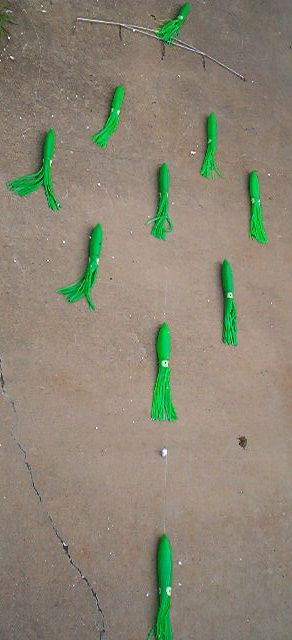 Spreader bars have been around for many years. Their use has grown tremendously as anglers try them for catching tuna and other species. The original tuna spreader bars were used to catch giant bluefin in the northeast. Today anglers have a wide selection of types, sizes, and price ranges.
Spreader bars have been around for many years. Their use has grown tremendously as anglers try them for catching tuna and other species. The original tuna spreader bars were used to catch giant bluefin in the northeast. Today anglers have a wide selection of types, sizes, and price ranges.
In the Mid Atlantic states, spreader bars are usually rigged with 9-12 plastic squid. Anglers buy pre-rigged spreader bars or assemble their own from components. There are many variations of spreader bars.
Some bars utilize all squid while others employ sreen machines, tuna clones, ballyhoo rigs or other lures. Some spreader bar models have a snap on the center daisy chain for attaching a lure. This variation allows the angler to experiment with various baits and colors. Some anglers even run the spreader bar as a teaser with lure just behind it, on a separate rod.
Spreader bars see use on everything from small center consoles, right up to the biggest sportfishermen. Techniques vary with the size and height of the boat and the type of bar.
Small boats are limited in the number of spreaders and the distance they can run them from the stern. Most small boaters will run 1 or 2 spreader bars off the stern and in some cases on the short rigger.
Larger boats can fish the spreader from the short rigger, tower or flat line. In general, the higher the rod’s location on the boat, the farther back it can be fished in the spread.
Tuna often crash the spreader, slashing behind it. When this happens, additional strikes can often be incited by vigorously jigging the rod of the spreader or another lure nearby. Jigging can yield remarkable results but anglers must hang on tight as tuna often return and attack the rig at full speed.